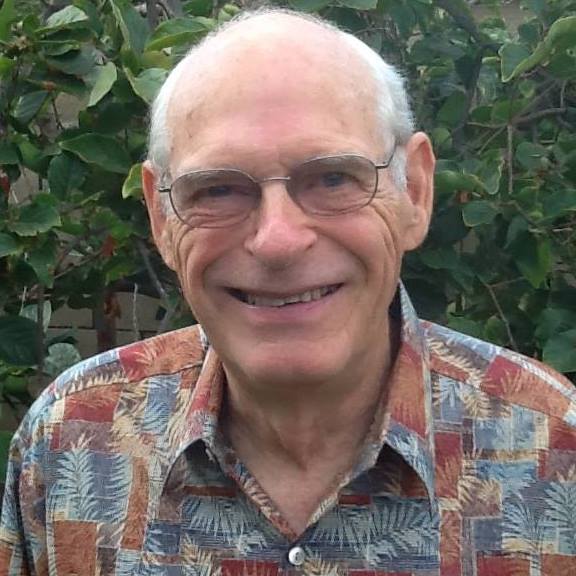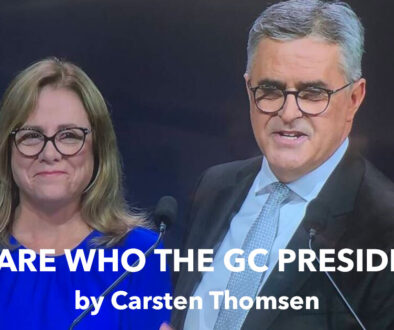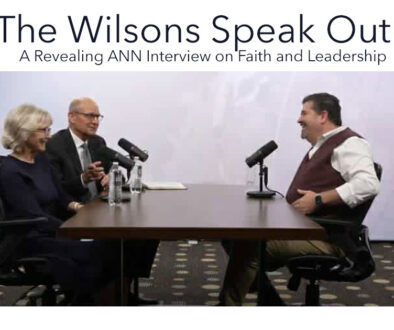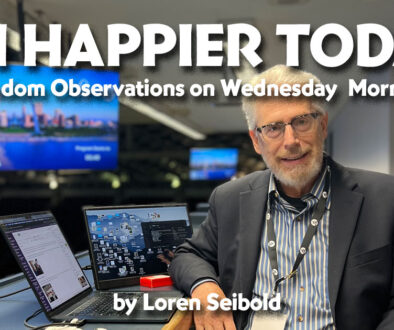At What Cost Unity?
by Larry Downing | 23 April 2018 |
In the February 12 “Adventist Review on Line” (NEWS), Andrew McChesney, editor of the Seventh-day Adventist Mission Quarterly, reported on the 11th annual Global Leadership Summit (February 6-7, 2018) held in Lisbon, Portugal. According to McChesney, unity is a “key issue among church leaders as the General Conference, the administrative body of the world church, contends with several units that are not in compliance with voted policies.”
In his article, McChesney writes “… [t]he major topic for meeting centered on the unity needed to fulfill the evangelistic mission of the church.” In one of his presentations, General Conference president Ted Wilson stated, “Real unity … comes from a heart-felt submission to God and to our fellow church members as we work together being instructed by the Holy Word, the Spirit of Prophecy, and the Holy Spirit.” He informed attendees that the “resulting unity far supersedes any privately held convictions after items have been carefully reviewed by the world church and decisions have been taken.” He added that this unity “far supersedes any legal ‘rights’ that might be exercised. Moral and spiritual obligations to God, to His church, and to His united mission far outweigh any legal or independent opinions of a member or an organization within the general church body.
“When any organization, as a part of the body of Christ, His church,” Wilson continued, “demands its own way contrary to the will of the entire body, that willful and independent organization is working against God’s wishes for a united church in mission based on John 17.”
McChesney’s report of the meeting made no reference to Wilson’s frequent call for the two Rs: revival and reformation. Fear not, the absent two Rs will appear again. The angst currently disturbing those who occupy the higher regions of the Adventist denomination is directed to the promotion of revival, reformation—and unity. In the past, feathers were ruffled and debates proliferated as church leaders argued over fundamental doctrines of the Christian faith. Was Christ a created being? Or had he existed from eternity? Is salvation achieved by faith alone in Christ? Or are we saved by faith in Christ, and by keeping the commandments and performing good works? These debates were often strident and divisive. Shattered souls were left to writhe in the wake of drawn-out conferences that met to settle theological matters that had long been part of the Christian faith. Thankfully, most of the heresies (such as the shut door, Arianism, an incomplete atonement at the cross) once held close by our early pioneers have titrated out. The remnant, the Harvest Principle, headship, and the like yet fester on the fringes of Adventism. We can hope that these tangents, like other heretical teachings, will right soon become another mote in the dustbin of Adventist history.
As one gives thought to Reformation, Revival and Unity, certain conclusions begin to form. If the 2Rs+U define the mission of the church, peril lies ahead. Each word is highly subjective; precise definition for any is a mushy business. None is achievable by fiat, divine or otherwise. To demand reformation and revival from a group or person is not unlike the imperative to be happy. The Rs percolate, not from a leader’s command, but from individual women and men who are caught up, possessed and challenged by an idea or opportunity. The call for unity is fraught with its own issues.
My Random House Unabridged Dictionary lists nine entries under the word unity. These include the state of being one; oneness; one single thing; something complete in itself, or regarded such; the oneness of a complex or organic whole of an interconnected series; a whole or totality as combining all its parts into one; absence of diversity, unvaried or uniform character; oneness of mind, feeling, etc., as among a number of persons; concord, harmony or agreement. Synonyms include singleness, singularity, and individuality.
Which definition, if implemented, will satisfy Ted Wilson? Or is it all of them in a bunch? It may be that, like Humpty Dumpty, unity means what Wilson intends it to mean. What we can deduce is that as understood by those who inhabit the Adventist hierarchy, unity when teamed with revival and reformation, are the behaviors that are essential to propel the Adventist denomination into the realms it was destined to inhabit. Good luck, guys!
We may puzzle how Adventists are to evidence unity and what unity will look like, if achieved. In our search for examples of those who placed emphasis on unity, it is legitimate to examine the lives of those in times past who advocated unity and sought to bring it about. They can be found. The emperors of the ancient world employed sword and terror to achieve unity. They failed. Adolph Hitler applied the forces of Nazism in his quest for unity. Joseph Stalin understood the role of the state to intimidate, control and destroy his people. So it is with ISIS, the Taliban and numerous others. The dictators of history and those in the contemporary world who insist their definition of unity alone is correct, seek power and control. Their modus operandi relies on a ruthless and consistent imposition of their will upon others. They are quick and efficient to purge dissenters. Thought police monitor to assure compliance.
It is not my purpose nor intent to compare the demands for unity and compliance that emanate from our church leaders with those of people we despise. Not at all! There are, however, lessons we do well to consider as we reflect on past events and persons. We learn that those who seek to control and manipulate, in the end, pay a heavy price, and so too, those who feel their wrath.
We who live removed from centers of ecclesiastical power are aware that the calls for unity are the siren’s call that will likely go unheeded by those to whom it is directed. There are more important matters to address than what an administrator, far removed from life in a parish, promotes or advocates. Those who minister in the parish comprehend what administrators either do not know or choose to ignore: diversity among North American Adventist churches exists and is here to stay! It is not realistic to think there will ever be a common agreement among us. Our congregations exhibit an amazing array of disunity. We do share certain beliefs and practices, and do not share others; we are not worried this is so. You want documentation? Visit 10 or 15 congregations and observe.
Attend an inner city parish; a church near an Adventist institution; a country parish; an urban church. You will find an astounding diversity. The worship services will not be similar. Some will follow a liturgical order, others do not know the word liturgy. One congregation will be led by women, others have only male worship leaders. The LBGTQ community will be welcomed in one parish, some from this group will hold church offices. Not so in others. You will find congregations that follow the Sabbath School Quarterly, others do not. Music will be contemporary in one, traditional in another. One congregation delights in Ellen White comments; in another parish her name will seldom be mentioned. People in one congregation meet after church at a local restaurant for lunch. In the congregation across town, congregants will have a potluck. After church, some parents may take their kids to play in a little league game or other sporting event. A sporting event on Sabbath? For others, never! The list of differences can extend far longer. The point is obvious. Now the question: Does unity demand one format on practice? Care to guess the result should a church administrator announce: “I want unity! Here is what you will do to make it happen.!” Should such a requirement, or one similar, issue from the GC president, it may be sufficient to fracture a fragile denomination.
Some may posit the examples above are extreme. They are not! The identified behaviors are practiced in U.S. Adventist congregations that gather next and every Sabbath thereafter. One congregation may look at what another does and pronounce it near pagan or demonic. Another congregation views the worship service of a nearby church irrelevant, boring and out of touch with reality. It is highly unrealistic to expect even the most skilled arbitrator to produce an agreement all parties would accept. Each congregation inhabits its own world. Yet, each congregation values its Adventist heritage and each meets on the Sabbath to worship the Lord, and each congregation meets in a building that exhibits the Seventh-day Adventist sign or logo.
McChesney records that, like Wilson, several speakers looked to John 17 as their model for unity. None apparently noted that Jesus’ plea that all be one, as he and the Father are one, went unanswered. Think Judas. Succeeding events in the early church provide further evidence not all was peace and harmony within the earliest church. The biblical writers report disagreement and a falling away from the original purposes and beliefs. How else explain Paul’s writings admonishing believers to return to what once captivated their minds?
The report of the leadership conference concluded with a quotation from G. Alexander Bryant, executive secretary for the North American Division, who applauded the speakers for showing that the Adventist Church is focused squarely on Christ. Within the context of a roundtable about training young people to become leaders, he is quoted as saying, “I wish young people in the North American Division could hear what we are saying today about the church being Christ-centered.” Amen to this! If only….

Lawrence Downing, DMin, is a retired pastor who has served as an adjunct instructor at La Sierra University School of Business and the School of Religion, and the Adventist International Institute of Advanced Studies in the Philippines.




